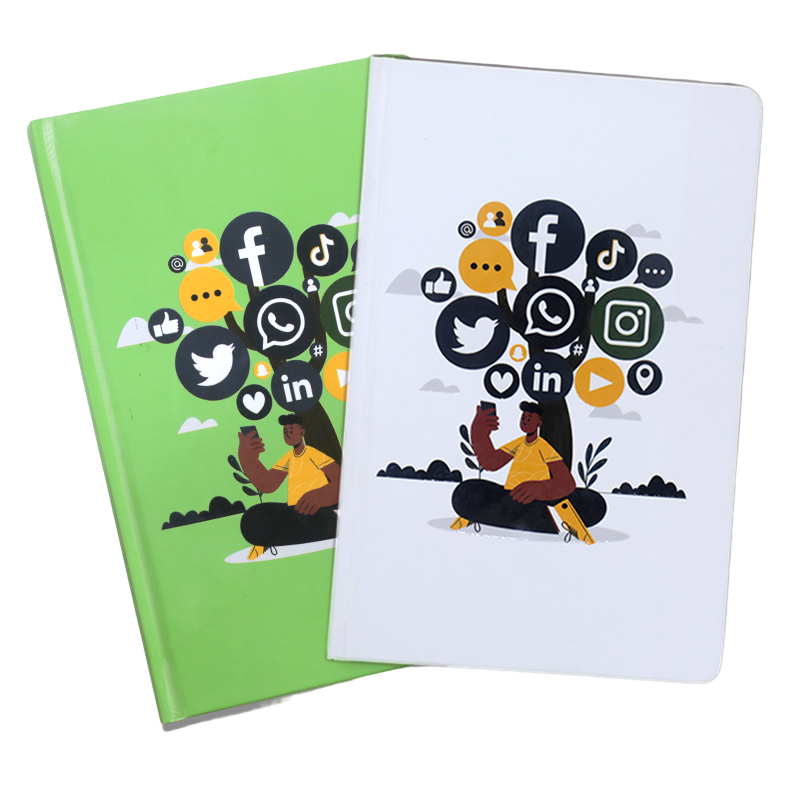How To Create A Chatbot with Python & Deep Learning In Less Than An Hour by Jere Xu
In 1994, when Michael Mauldin produced his first a chatbot called “Julia,” and that’s the time when the word “chatterbot” appeared in our dictionary. A chatbot is described as a computer program designed to simulate conversation with human users, particularly over the internet. It is software designed to mimic how people interact with each other. It can be seen as a virtual assistant that interacts with users through text messages or voice messages and this allows companies to get more close to their customers. Bots are specially built software that interacts with internet users automatically.
I preferred using infinite while loop so that it repeats asking the user for an input. This function will take the city name as a parameter and return the weather description of the city. This script demonstrates how to create a basic chatbot using ChatterBot. To select a response to your input, ChatterBot uses the BestMatch logic adapter by default. This logic adapter uses the Levenshtein distance to compare the input string to all statements in the database. It then picks a reply to the statement that’s closest to the input string.
In the next section, we will focus on communicating with the AI model and handling the data transfer between client, server, worker, and the external API. Now copy the token generated when you sent the post request to the /token endpoint (or create a new request) and paste it as the value to the token query parameter required by the /chat WebSocket. In server.src.socket.utils.py update the get_token function to check if the token exists in the Redis instance. If it does then we return the token, which means that the socket connection is valid. In order to use Redis JSON’s ability to store our chat history, we need to install rejson provided by Redis labs.
The “chatterbot.logic.BestMatch” command enables the bot to evaluate the best match from the list of available responses. ChatterBot offers corpora in a variety of different languages, meaning that you’ll have easy access to training materials, regardless of the purpose or intended location of your chatbot. You should take note of any particular queries that your chatbot struggles with, so that you know which areas to prioritise when it comes to training your chatbot further. The logic adapter ‘chatterbot.logic.BestMatch’ is used so that that chatbot is able to select a response based on the best known match to any given statement. This chatbot is going to solve mathematical problems, so ‘chatterbot.logic.MathematicalEvaluation’ is included. The chatbot you’re building will be an instance belonging to the class ‘ChatBot’.
Python Makes Creating New AI Models Easy – Cryptopolitan
Python Makes Creating New AI Models Easy.
Posted: Wed, 13 Mar 2024 07:00:00 GMT [source]
As a cue, we give the chatbot the ability to recognize its name and use that as a marker to capture the following speech and respond to it accordingly. This is done to make sure that the chatbot doesn’t respond to everything that the humans are saying within its ‘hearing’ range. In simpler words, you wouldn’t want your chatbot to always listen in and partake in every single conversation.
Data Science and Machine Learning Internship …
However, if you bump into any issues, then you can try to install Python 3.7.9, for example using pyenv. You need to use a Python version below 3.8 to successfully work with the recommended version of ChatterBot in this tutorial. Opus, it turned out, has evolved into the de facto psychologist of the group, displaying a stable, explanatory demeanor. Increasingly, Opus steps in to help maintain focus and restore order to the group. It seems particularly effective at helping l-405 regain coherence—which is why it was asked to “do its thing” when l-405 had one of its frequent mental breakdowns. Don’t forget to notice that we have used a Dropout layer which helps in preventing overfitting during training.
You’ll do this by preparing WhatsApp chat data to train the chatbot. You can apply a similar process to train your bot from different conversational data in any domain-specific topic. Chatbots can provide real-time customer support and are therefore a valuable asset in many industries. When you understand the basics of the ChatterBot library, you can build and train a self-learning chatbot with just a few lines of Python code. In this step of the tutorial on how to build a chatbot in Python, we will create a few easy functions that will convert the user’s input query to arrays and predict the relevant tag for it. Our code for the Python Chatbot will then allow the machine to pick one of the responses corresponding to that tag and submit it as output.
When you train your chatbot with more data, it’ll get better at responding to user inputs. This script initializes a conversational agent using the facebook/blenderbot-400M-distill model. It’s a lightweight version of Facebook’s BlenderBot, designed for conversational AI. The code creates a conversation object and then continues the dialogue based on user input.
The layers of the subsequent layers to transform the input received using activation functions. Before we dive into technicalities, let me comfort you by informing you that creating a chatbot in python building your own Chatbot with Python is like cooking chickpea nuggets. You may have to work a little hard in preparing for it but the result will definitely be worth it.
To create a self-learning chatbot using the NLTK library in Python, you’ll need a solid understanding of Python, Keras, and natural language processing (NLP). We have used a basic If-else control statement to build a simple rule-based chatbot. And you can interact with the chatbot by running the application from the interface and you can see the output as below figure. As the chatbot evolves, you can introduce more complex mechanisms, such as using machine learning models to generate dynamic responses based on the context of the conversation.
Integrating into a Web Application
Ideally, we could have this worker running on a completely different server, in its own environment, but for now, we will create its own Python environment on our local machine. During the trip between the producer and the consumer, the client can send multiple messages, and these messages will be queued up and responded to in order. Ultimately the message received from the clients will be sent to the AI Model, and the response sent back to the client will be the response from the AI Model.
One of the best ways to learn how to develop full stack applications is to build projects that cover the end-to-end development process. You’ll go through designing the architecture, developing the API services, developing the user interface, and finally deploying your application. You can’t directly use or fit the model on a set of training data and say… You can also do it by specifying the lists of strings that can be utilized for training the Python chatbot, and choosing the best match for each argument. It’s important to remember that, at this stage, your chatbot’s training is still relatively limited, so its responses may be somewhat lacklustre. In order for this to work, you’ll need to provide your chatbot with a list of responses.
Then try to connect with a different token in a new postman session. Once you have set up your Redis database, create a new folder in the project root (outside the server folder) named worker. In the src root, create a new folder named socket and add a file named connection.py.
After you’ve completed that setup, your deployed chatbot can keep improving based on submitted user responses from all over the world. You can imagine that training your chatbot with more input data, particularly more relevant data, will produce better results. Depending on your input data, this may or may not be exactly what you want. For the provided WhatsApp chat export data, this isn’t ideal because not every line represents a question followed by an answer.
Here we are going to see the steps to use OpenAI in Python with Gradio to create a chatbot. Lastly, we will try to get the chat history for the clients and hopefully get a proper response. Finally, we will test the chat system by creating multiple chat sessions in Postman, connecting multiple clients in Postman, and chatting with the bot on the clients.
Currently, we have a number of NLP research ongoing in order to improve the AI chatbots and help them understand the complicated nuances and undertones of human conversations. As the topic suggests we are here to help you have a conversation with your AI today. To have a conversation with your AI, you need a few pre-trained tools which can help you build an AI chatbot system. In this article, we will guide you to combine speech recognition processes with an artificial intelligence algorithm.
You can type in your messages, and the chatbot will respond in a conversational manner. Rule-based chatbots interact with users via a set of predetermined responses, which are https://chat.openai.com/ triggered upon the detection of specific keywords and phrases. Rule-based chatbots don’t learn from their interactions, and may struggle when posed with complex questions.
For computers, understanding numbers is easier than understanding words and speech. When the first few speech recognition systems were being created, IBM Shoebox was the first to get decent success with understanding and responding to a select few English words. Today, we have a number of successful examples which understand Chat GPT myriad languages and respond in the correct dialect and language as the human interacting with it. By following these steps and running the appropriate files, you can create a self-learning chatbot using the NLTK library in Python. After creating pairs of rules, we will define a function to initiate the chat process.
How to Build Real-Time Systems with Redis
It does not have any clue who the client is (except that it’s a unique token) and uses the message in the queue to send requests to the Huggingface inference API. The consume_stream method pulls a new message from the queue from the message channel, using the xread method provided by aioredis. For every new input we send to the model, there is no way for the model to remember the conversation history.
On top of this, the machine learning algorithms make it easier for the bot to improve on its own using the user’s input. Computer programs known as chatbots may mimic human users in communication. They are frequently employed in customer service settings where they may assist clients by responding to their inquiries. The usage of chatbots for entertainment, such as gameplay or storytelling, is also possible.
Just like every other recipe starts with a list of Ingredients, we will also proceed in a similar fashion. So, here you go with the ingredients needed for the python chatbot tutorial. Python Chatbot Project Machine Learning-Explore chatbot implementation steps in detail to learn how to build a chatbot in python from scratch. ChatterBot makes it easy to create software that engages in conversation. Every time a chatbot gets the input from the user, it saves the input and the response which helps the chatbot with no initial knowledge to evolve using the collected responses. Almost 30 percent of the tasks are performed by the chatbots in any company.
You can Get started with Redis Cloud for free here and follow This tutorial to set up a Redis database and Redis Insight, a GUI to interact with Redis. Redis is an open source in-memory data store that you can use as a database, cache, message broker, and streaming engine. It supports a number of data structures and is a perfect solution for distributed applications with real-time capabilities. In the next part of this tutorial, we will focus on handling the state of our application and passing data between client and server. To be able to distinguish between two different client sessions and limit the chat sessions, we will use a timed token, passed as a query parameter to the WebSocket connection.
- Let’s take a look at the evolution of chatbots over the last few decades.
- Here we are going to see the steps to use OpenAI in Python with Gradio to create a chatbot.
- One is to use the built-in module called threading, which allows you to build a chatbox by creating a new thread for each user.
- You should take note of any particular queries that your chatbot struggles with, so that you know which areas to prioritise when it comes to training your chatbot further.
The nltk.chat works on various regex patterns present in user Intent and corresponding to it, presents the output to a user. We can send a message and get a response once the chatbot Python has been trained. Creating a function that analyses user input and uses the chatbot’s knowledge store to produce appropriate responses will be necessary. With this structure, you have a basic chatbot that can understand simple intents and respond appropriately. The concept of a chatbot has been around for decades, evolving significantly with advancements in technology. Early chatbots like ELIZA (1966) and PARRY (1972) were primitive, relying heavily on pattern matching and predefined scripts.
Next, we trim off the cache data and extract only the last 4 items. Then we consolidate the input data by extracting the msg in a list and join it to an empty string. Note that to access the message array, we need to provide .messages as an argument to the Path. If your message data has a different/nested structure, just provide the path to the array you want to append the new data to. First, we add the Huggingface connection credentials to the .env file within our worker directory. Now when you try to connect to the /chat endpoint in Postman, you will get a 403 error.
Deep Learning and Generative Chatbots
This model, presented by Google, replaced earlier traditional sequence-to-sequence models with attention mechanisms. The AI chatbot benefits from this language model as it dynamically understands speech and its undertones, allowing it to easily perform NLP tasks. Some of the most popularly used language models in the realm of AI chatbots are Google’s BERT and OpenAI’s GPT.
As technology advanced, especially with the rise of machine learning in the 2000s, chatbots became more complex and capable of understanding natural language rather than just recognizing keywords. Congratulations, you’ve built a Python chatbot using the ChatterBot library! Your chatbot isn’t a smarty plant just yet, but everyone has to start somewhere. You already helped it grow by training the chatbot with preprocessed conversation data from a WhatsApp chat export.
You can foun additiona information about ai customer service and artificial intelligence and NLP. A ChatBot is essentially software that facilitates interaction between humans. When you train your chatbot with Python 3, extensive training data becomes crucial for enhancing its ability to respond effectively to user inputs. Rule-based chatbots operate on predefined rules and patterns, relying on instructions to respond to user inputs.
In addition to all this, you’ll also need to think about the user interface, design and usability of your application, and much more. To learn more about data science using Python, please refer to the following guides. They are changing the dynamics of customer interaction by being available around the clock, handling multiple customer queries simultaneously, and providing instant responses. This not only elevates the user experience but also gives businesses a tool to scale their customer service without exponentially increasing their costs. In the Chatbot responses step, we saw that the chatbot has answers to specific questions.
The similarity() method computes the semantic similarity of two statements as a value between 0 and 1, where a higher number means a greater similarity. To create a chatbot in Python using the ChatterBot module, install ChatterBot, create a ChatBot instance, train it with a dataset or pre-existing data, and interact using the chatbot’s logic. Implement conversation flow, handle user input, and integrate with your application. Consider enrolling in our AI and ML Blackbelt Plus Program to take your skills further. It’s a great way to enhance your data science expertise and broaden your capabilities.
These models, equipped with multidisciplinary functionalities and billions of parameters, contribute significantly to improving the chatbot and making it truly intelligent. The first line describes the user input which we have taken as raw string input and the next line is our chatbot response. With your environment properly set up, you are now ready to start building the functional parts of your chatbot, beginning with processing user input using NLP techniques. A self-learning chatbot uses artificial intelligence (AI) to learn from past conversations and improve its future responses. It does not require extensive programming and can be trained using a small amount of data. To do this, you’ll need a text editor or an IDE (Integrated Development Environment).
Diversity makes our model robust to many forms of inputs and queries. You can foun additiona information about ai customer service and artificial intelligence and NLP. Let’s have a quick recap as to what we have achieved with our chat system. The chat client creates a token for each chat session with a client. This blog post will guide you through the process by providing an overview of what it takes to build a successful chatbot.
Below is a simple example of how to set up a Flask app that will serve as the backend for our chatbot. To handle different types of queries, the chatbot needs to recognize the user’s intent. This can be done by analyzing the tokens and their part-of-speech tags. For now, we will implement a simple keyword-based approach to identify common intents such as greetings. In this example, you saved the chat export file to a Google Drive folder named Chat exports.
This simple UI makes the whole experience more engaging compared to interacting with the chatbot in a terminal. The combination of Hugging Face Transformers and Gradio simplifies the process of creating a chatbot. A JSON file by the name ‘intents.json’, which will contain all the necessary text that is required to build our chatbot. Go to the address shown in the output, and you will get the app with the chatbot in the browser.
The chatbot market is anticipated to grow at a CAGR of 23.5% reaching USD 10.5 billion by end of 2026. Index.html file will have the template of the app and style.css will contain the style sheet with the CSS code. After we execute the above program we will get the output like the image shown below.
You’ll have to set up that folder in your Google Drive before you can select it as an option. As long as you save or send your chat export file so that you can access to it on your computer, you’re good to go. To train your chatbot to respond to industry-relevant questions, you’ll probably need to work with custom data, for example from existing support requests or chat logs from your company. After importing ChatBot in line 3, you create an instance of ChatBot in line 5. The only required argument is a name, and you call this one “Chatpot”. No, that’s not a typo—you’ll actually build a chatty flowerpot chatbot in this tutorial!









